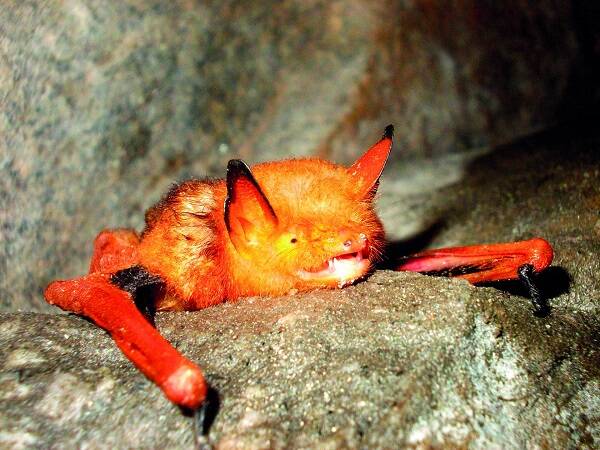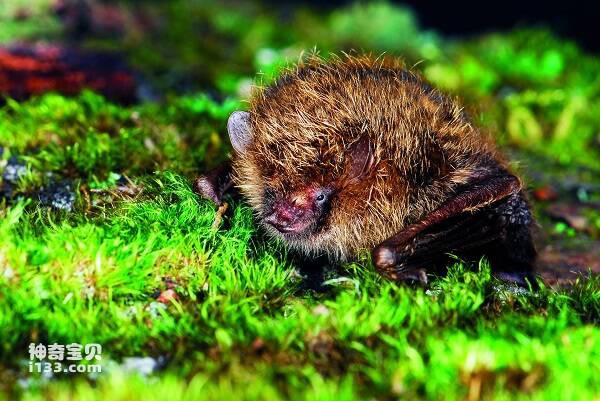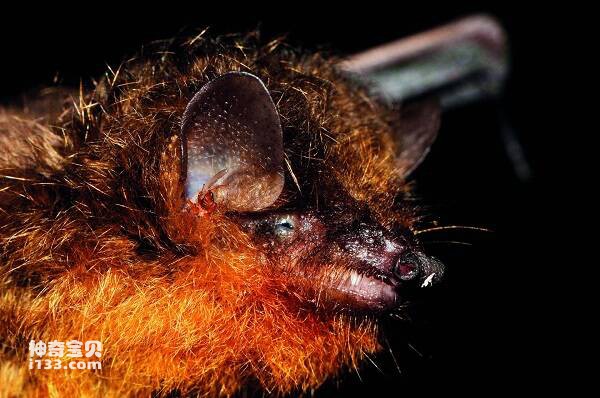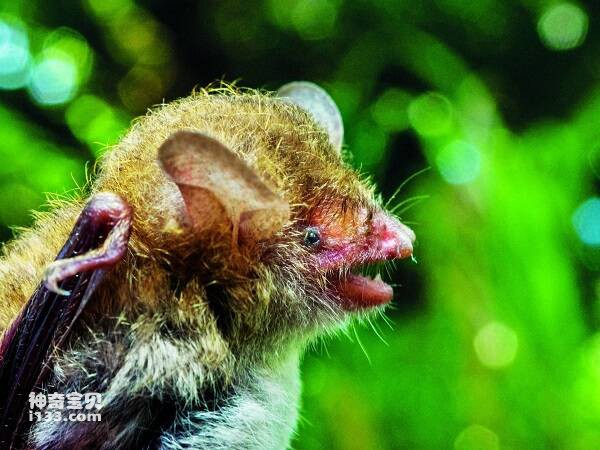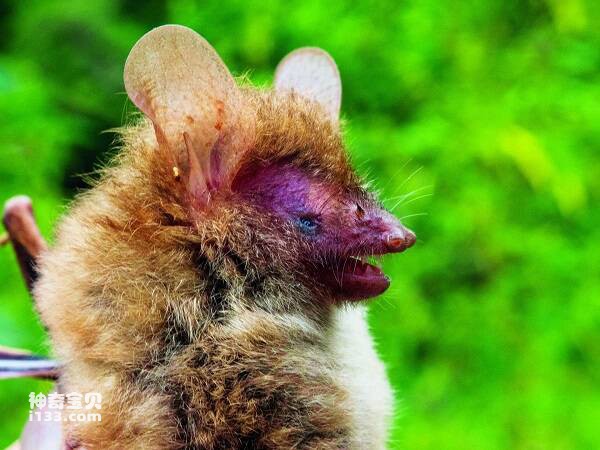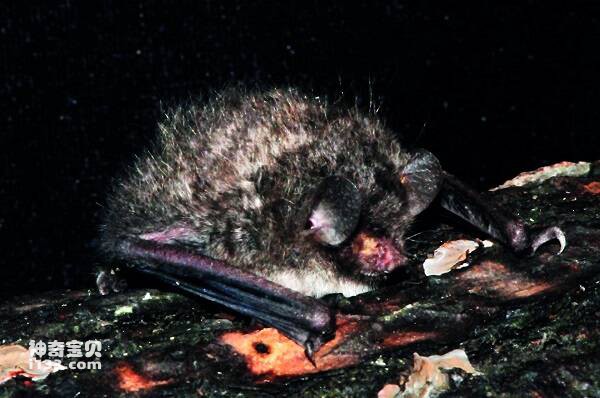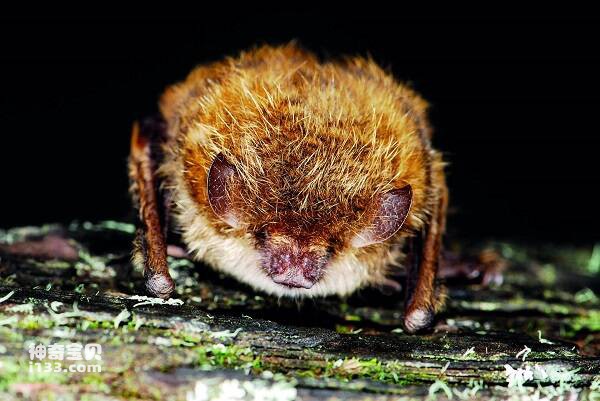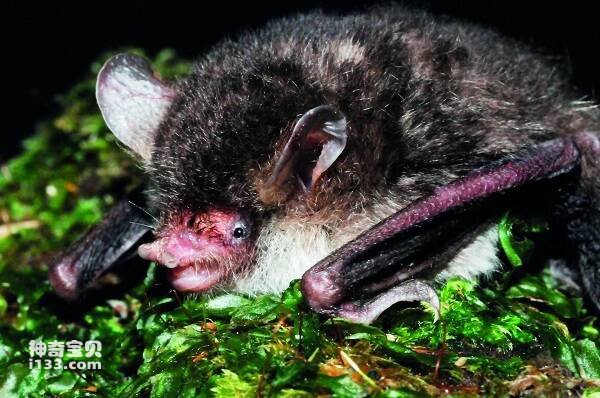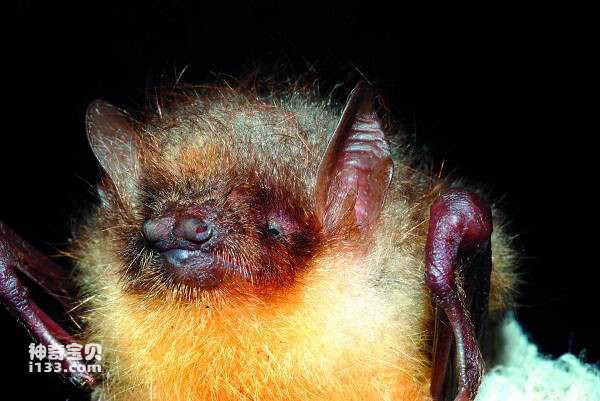Myotis rufoniger
IUCN
LCBasic Information
Scientific classification
- name:Myotis rufoniger
- Scientific Name:Myotis rufoniger
- Outline:Chiroptera
- Family:Chiroptera Batidae Myotis
Vital signs
- length:
- Weight:
- lifetime:
Feature
The color is bright, ochre red, reddish-brown on the back, orange on the abdomen
Distribution and Habitat
Within China, it is distributed in Anhui, Fujian, Guangxi, Shanghai, Zhejiang, Jiangsu, Jilin, Liaoning, Chongqing, Jiangxi, Hubei, Shaanxi, Guizhou, Sichuan and Taiwan. It is distributed abroad in North Korea, South Korea, Vietnam, Laos and Japan.
Because of its bright color, it is often hung upside down on the top of the cave. This kind of habitat is found in caves, trees, bamboo forests, eaves, Windows and doors.
Appearance
The body size is larger. Forearm length 56-66mm. The ears are long and narrow, slightly oval, with dark red margins; The tragus is elongated, slightly obtuse at the end, slightly more than half the length of the ear, with a small basal lobe. The hair color is gorgeous, the back hair is brown, the ventral hair is orange yellow, and the wing membrane has a triangular deep reddish-brown spot between the palm and finger to the wing edge; Interfemoral membrane orange yellow, with sparse short hair.
Details
Myotis Watasei feeds on insects, especially mosquitoes, and is beneficial to humans. Csorba et al. (2014) classified the goatley-eared bat (<Myotis formosus) and its related species. Dang Feihong et al. (2016), through morphological and molecular studies, showed that the "goat-eat-bat" originally identified in the domestic literature (the scientific name was misused as <M. formosus>) was actually Watsei-eat-bat (<M. rufoniger>). The intra-Chinese distribution is mainly concentrated in eastern China, while the related species of Golden Myotis bat (<M. formosus) is only recorded in Taiwan and Jiangxi.
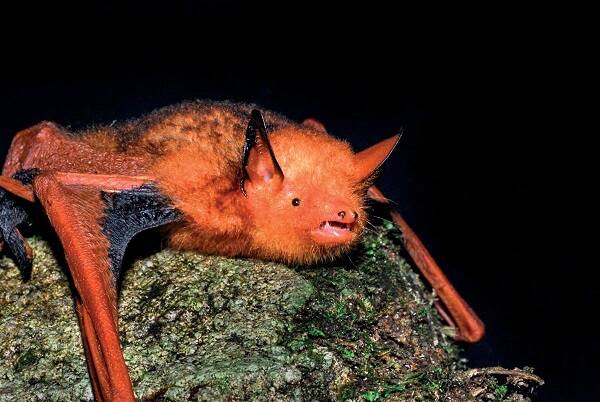
Myotis Watsei, known as the "most beautiful bat", mainly feeds on insects, roosts in trees and bamboo forests in summer, and overwinters in caves and wall caves in winter.
On the afternoon of February 6, 2022, volunteers of the China Green Hair Association found six colorful bats near Huaguo Mountain in Lianyungang City, which was very beautiful. Later identified by Dr. Shi Jingzhu of the Chinese Academy of Social Sciences, they are Watase's Myoetis bats, known as the "most beautiful bats".
This species is relatively rare, with only 64 records currently in the Global Biodiversity Information Platform (GBIF) database. The species is listed as "vulnerable "(NIBR 2012) and" rare "(National Committee for the Korean People and Biosphere 2002) on the relevant Red Lists of South Korea and North Korea. The species is rated "not at risk" (LC) in the 2018 IUCN Red List assessment.
